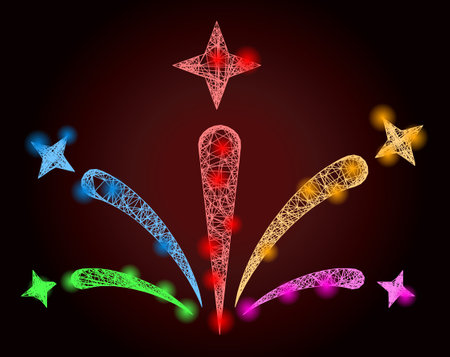Introduction to Celestial Imagery in Victorian Literature
In the rich tapestry of nineteenth-century British literature, celestial imagery occupies a place of striking significance. The Victorians were captivated by the mysteries of the heavens, drawing upon stars, moons, and other cosmic elements as powerful symbols within their writing. These motifs did not merely serve as decorative language; rather, they reflected the complex interplay between scientific discovery, religious belief, and personal longing that characterised the era. As telescopic advances brought distant planets into view and Darwinian theory challenged established faiths, British writers used the vastness of the sky to explore questions of destiny, morality, and human connection. Against this backdrop, the Brontë sisters—Charlotte, Emily, and Anne—emerged as particularly evocative voices who harnessed celestial imagery to express both cultural anxieties and private hopes. In examining their works through this lens, we gain insight into how Victorian society grappled with its place in an ever-expanding universe, while also recognising how such imagery allowed individual authors to articulate spiritual yearning and emotional intensity unique to their time.
2. Biographical Influences: The Brontë Sisters and Their Setting
The celestial imagery found throughout the works of the Brontë sisters cannot be fully appreciated without understanding the profound influence of their Yorkshire upbringing. Raised in the remote village of Haworth, surrounded by sweeping moors and open skies, Charlotte, Emily, and Anne Brontë developed a deep affinity with nature and the cosmos. This unique setting fostered both their imaginative capacities and a sense of spiritual wonder, which is frequently mirrored in their writing.
The Yorkshire Landscape as Inspiration
Yorkshire’s dramatic landscapes — vast heather moorlands under ever-changing weather and star-studded night skies — played an essential role in shaping the sisters’ perception of the world. These surroundings provided not only physical isolation but also a space for introspection and creative exploration. In many ways, the openness of the moors invited contemplation of both earthly and celestial realms, which is evident in their frequent use of sky, stars, and atmospheric phenomena as metaphors for emotion, fate, or transcendence.
Personal Experiences Shaping Literary Imagination
The Brontës’ fascination with celestial imagery was also influenced by personal loss, religious upbringing, and intellectual curiosity. Their father, Patrick Brontë, encouraged scholarly pursuits at home, introducing them to classical literature and contemporary scientific thought. The sisters often turned to stargazing as a source of comfort during times of grief or loneliness, using the heavens as a symbol for hope or eternity within their novels and poetry.
Key Biographical Influences on Celestial Imagery
| Influence | Description | Manifestation in Writings |
|---|---|---|
| Yorkshire Moors | Expansive landscapes fostering imagination | Vivid depictions of skies and weather reflecting inner states (e.g., “Wuthering Heights”) |
| Family Tragedies | Early deaths of siblings creating emotional depth | Celestial motifs as metaphors for loss and longing (e.g., “Jane Eyre”) |
| Religious Upbringing | Moral education grounded in Anglicanism | Cosmic imagery representing spiritual journeys (e.g., “Agnes Grey”) |
| Scientific Curiosity | Interest in astronomy and natural sciences | References to planets, stars, and astronomical events (across poetry and prose) |
This interplay between environment, upbringing, and personal experience created fertile ground for the Brontë sisters’ distinctive literary voice. Their use of celestial imagery thus becomes more than mere decoration; it serves as an authentic reflection of their lives amid Yorkshire’s wild beauty and their persistent search for meaning beyond the visible horizon.

3. Celestial Images in Jane Eyre, Wuthering Heights, and Agnes Grey
When exploring the Brontë sisters’ most celebrated novels—Jane Eyre, Wuthering Heights, and Agnes Grey—one cannot help but notice the recurring celestial imagery that shapes both atmosphere and emotion. The use of stars, moonlight, and darkness is not merely decorative; rather, these elements serve as powerful metaphors for longing, hope, isolation, and transformation within each narrative.
Stars as Symbols of Hope and Distance
In Jane Eyre, Charlotte Brontë often employs the image of stars to reflect Jane’s internal world. Consider the moment when Jane gazes at the night sky after a traumatic event; the distant stars embody her sense of solitude but also glimmer with potential guidance and aspiration. This duality—being far away yet offering light—mirrors Jane’s emotional journey towards independence and self-worth. Similarly, in Wuthering Heights, Emily Brontë invokes starlight during scenes of yearning between Catherine and Heathcliff. The stars shine above the moors, suggesting an unreachable yet eternal connection between souls divided by earthly circumstances.
Moonlight: A Liminal Space Between Worlds
The motif of moonlight features prominently across the sisters’ works, often accompanying moments of revelation or transformation. In Jane Eyre, moonlight bathes Thornfield Hall during pivotal encounters, casting both clarity and ambiguity upon Jane’s path. Moonlit scenes evoke a sense of liminality—a threshold between safety and danger, belonging and alienation. In Wuthering Heights, moonlight on the wild landscape amplifies gothic tension while hinting at the supernatural bonds between characters. For Anne Brontë’s Agnes Grey, quieter references to moonlit evenings offer solace to Agnes amidst hardship, infusing the narrative with gentle resilience.
The Emotional Weight of Darkness
Darkness in these novels is rarely just an absence of light; it serves as a canvas upon which fear, uncertainty, or despair are projected. In Jane Eyre, shadowy corridors represent Jane’s psychological struggles. Emily Brontë wields darkness more turbulently: the stormy nights at Wuthering Heights echo inner turmoil and unresolved passion. Even in Agnes Grey, moments spent walking alone in darkness reveal Agnes’s vulnerability but also her quiet strength. Through such imagery, the Brontës express complex emotions that transcend their immediate Victorian context while resonating deeply with British sensibilities—where unpredictable weather and dramatic landscapes shape national identity and imagination.
This careful weaving of celestial imagery grounds their characters’ experiences in something larger than themselves—inviting readers to contemplate their own relationship with hope, longing, and the vastness of existence beneath the English sky.
4. Symbolism and Psychological Depth
The celestial imagery woven throughout the Brontë sisters’ writings serves as more than mere decorative language; it is deeply intertwined with the psychological and emotional landscapes of their characters. Rather than simply painting picturesque night skies or starlit moors, the Brontës employ motifs such as stars, moons, and the heavens to articulate nuanced states of mind—hope in times of darkness, despair when overwhelmed by circumstances, yearnings for spiritual transcendence, and aspirations for personal freedom.
Celestial Motifs as Symbols
In their novels, celestial symbols often mirror the internal worlds of protagonists. For example, in Jane Eyre, Charlotte Brontë uses references to the moon and stars not only to set a gothic atmosphere but to reflect Jane’s longing for connection and a sense of belonging. Similarly, in Emily Brontë’s Wuthering Heights, tumultuous weather and starless nights parallel Cathy and Heathcliff’s emotional turmoil.
Key Celestial Symbols and Their Psychological Associations
| Celestial Image | Symbolic Meaning | Brontë Example |
|---|---|---|
| Stars | Hope, guidance, distant aspirations | Jane gazes at stars when seeking comfort or envisioning a better future (Jane Eyre) |
| The Moon | Nurturing presence, changeability, feminine wisdom | The moon as a silent witness during Jane’s moments of reflection (Jane Eyre) |
| The Sky/Heavens | Spiritual longing, freedom beyond earthly constraints | Cathy’s declarations about her soul being “more like the wind” under the open sky (Wuthering Heights) |
| Clouds/Darkness | Despair, confusion, emotional uncertainty | Misty moor scenes reflecting characters’ inner conflict (all sisters) |
A Psychological Lens on Celestial Imagery
This intricate symbolism reveals the Brontës’ acute psychological insight. Their use of celestial imagery allows readers to access the unspoken depths of their characters’ experiences. The shifting skies are not just backdrops—they echo the turbulence or tranquillity within each protagonist. In this way, celestial motifs become practical tools for understanding complex emotions—signposts guiding both character and reader through hope, despair, longing, and self-discovery.
5. Cultural Nuances: British Sensibilities and Celestial Themes
When exploring the celestial imagery woven throughout the Brontë sisters writings, it is essential to consider the distinctly British cultural landscape that shaped their creative vision. The Brontës were deeply rooted in the Yorkshire moors, surrounded by a rich tapestry of local folklore, religious traditions, and prevailing Victorian attitudes—all of which left an indelible mark on their literary use of the heavens.
The Influence of Local Folklore
Celestial motifs often surface in British folklore, where stars, moons, and comets are seen as omens or guides. In works like Emily Brontë’s Wuthering Heights, references to the night sky and its shifting moods evoke not only personal emotion but also collective myths cherished by rural communities. Such images would have resonated with Victorian readers familiar with tales of “wishing upon a star” or interpreting moon phases as signs from fate. This grounding in local legend lends an authenticity to their writing and amplifies the emotional resonance for British audiences.
Religious Undertones and Moral Reflection
The Brontës’ era was marked by a deep engagement with Christianity, and this is reflected in their frequent allusions to the heavens as symbols of hope, redemption, or divine judgement. Celestial bodies are sometimes depicted as witnesses to human suffering or as emblems of spiritual aspiration—echoing sermons that likened the stars to God’s eternal presence. In Charlotte Brontë’s Jane Eyre, for example, Jane often seeks solace in the night sky during moments of distress, drawing comfort from the idea of a higher moral order overseeing her struggles.
Victorian Attitudes toward the Universe
The nineteenth century was a period of scientific discovery and philosophical questioning in Britain. The expansion of astronomy challenged long-held beliefs about humanity’s place in the cosmos. The Brontës capture this tension between awe and anxiety; their celestial imagery reflects both the wonder inspired by new knowledge and a nostalgic yearning for certainty. By invoking the grandeur of the universe alongside intimate human concerns, they mirror the Victorian struggle to reconcile faith, science, and emotion—a uniquely British sensibility that continues to resonate today.
Practical Reflection: Connecting with Your Own Cultural Sky
As you read or revisit the Brontës’ novels, consider how your own cultural background shapes your interpretation of celestial symbols. Whether you find comfort in starlit metaphors or question their meaning, recognising these layers can deepen your connection to both literature and your sense of place under the same vast sky.
6. The Enduring Legacy of Celestial Imagery in Modern British Literature
The Brontë sisters’ evocative use of celestial imagery has left an indelible mark on the landscape of British literature, influencing generations of writers and critics alike. Their poetic references to stars, the moon, and the heavens have become more than mere decorative elements; they serve as vital conduits for exploring inner emotional worlds, societal constraints, and existential longing. This symbolic language, rooted in both Romanticism and personal experience, continues to echo throughout modern literary works.
Influence on Later British Writers
Writers such as Virginia Woolf, Jeanette Winterson, and Ian McEwan have drawn upon the Brontës’ tradition of using the night sky as a canvas for psychological exploration. Woolf’s introspective narratives often mirror the Brontëan motif of seeking solace or revelation under starlit skies. Similarly, contemporary novelists employ celestial metaphors to articulate struggles with identity, belonging, and transformation—threads that can be traced directly back to the Brontë sisters’ innovative symbolism.
Continued Relevance in Literary Analysis
Today, celestial imagery remains a fertile ground for literary analysis within academic circles across Britain. Critics and students dissect how the Brontës wove cosmic symbols into their narratives to challenge Victorian norms and to provide nuanced insights into their characters’ psyches. This approach encourages readers to look beyond surface-level storytelling and engage with deeper philosophical questions about fate, hope, and human resilience.
A Timeless Language for Emotional Expression
Perhaps most profoundly, the Brontës’ celestial symbolism endures because it offers a timeless vocabulary for articulating universal human emotions. In an era where many feel adrift amidst rapid social changes, looking up at the stars—as Jane Eyre or Catherine Earnshaw once did—remains a potent metaphor for yearning, possibility, and connection. Through their pioneering use of celestial imagery, the Brontë sisters not only enriched the fabric of British literature but also equipped future generations with enduring tools for self-reflection and creative expression.


